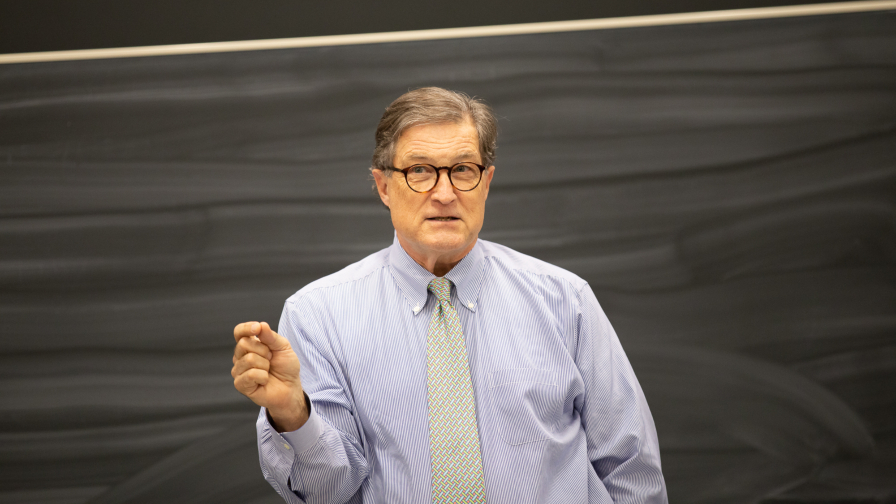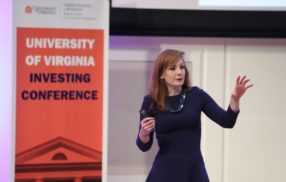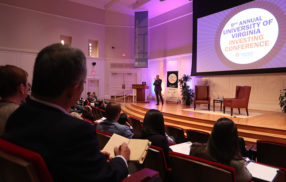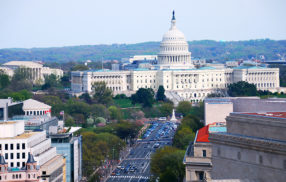
Former Richmond Fed President: Precedent Dictated Financial Crisis Bailouts
By Dave Hendrick
Jeffrey Lacker held the top spot at the Federal Reserve Bank of Richmond for 13 years, overseeing the regional bank during the onset and response to the global financial crisis in 2007–08. Speaking to the Adam Smith Society at the University of Virginia Darden School of Business recently, Lacker joked that the tumultuous period was “basically all I talk about now.”
“I was there in the room at many points, and it was an honor and a privilege to be part of something so historic,” Lacker said. “I was able to see firsthand [former U.S. Federal Reserve Chair] Ben Bernanke applying some pretty recent economic research to some tough policy situations.”
Lacker, now an economics professor at the Virginia Commonwealth University School of Business, said his current research focuses on the shifting role of the Federal Reserve banks and the historical journey to the events that came to a head in 2007.
According to Lacker, by the onset of the financial crisis, the Fed had long since established a frequent practice of bailing out uninsured creditors in bank failures, instilling an expectation of rescues in the marketplace.
“We set these precedents over the course of the ’70s and ’80s and ’90s of organizing rescues, sometimes funding them, that insulated some uninsured investors in large financial institutions from losses,” Lacker said. “We came into the crisis with a huge amount of precedent set, and arguably a huge expectation on the part of financial markets that we would behave this way again.”
Lacker suggested the country had moved away from unfettered competitive markets, a system that he said generally demonstrated “positive effects through history,” toward one in which there is a “fairly substantial backstop” with a “fairly pervasive expectation of intervention.”
Indeed, according to the Bailout Barometer published by the Richmond Fed, more than 60 percent of the liabilities of the financial system are subject to explicit or implicit protection against loss by the federal government. That figure compares to about 45 percent in 1999.
The guarantees, both explicit and assumed, appear to have the perverse impact of injecting instability into financial markets, Lacker suggested, as financial institutions act with less regard for the risk of their actions.
At the time of the financial crisis, when federal regulators were making corporate life-and-death decisions on who to bail out and how, Lacker said the decades of precedent pointed toward a strong bias for a bailout.
“Having set these expectations for four or five decades, we were in a box,” Lacker said. “Do you confound those expectations or do you live up to them?”
Lacker said he thought it was “contestable” whether the path taken was, as some officials claimed, truly the only option, but after the initial bailouts, with what he described as six firms rescued in five different ways, Lacker said by the fall of 2008 he believed it made sense to “throw in the towel” and “bail out everyone.”
The Emergency Economy Stabilization Act of 2008 ultimately authorized up to $700 billion to purchase a variety of assets and shore up troubled banks.
Despite the position of the Bailout Barometer, Lacker lauded some of the steps taken in the wake of the financial crisis, and said required stress tests on large banks are a valuable way to ensure the health of large financial institutions.
For more perspective on the global financial crisis, join the University of Virginia Investing Conference at Darden on 8–9 November.
The University of Virginia Darden School of Business prepares responsible global leaders through unparalleled transformational learning experiences. Darden’s graduate degree programs (MBA, MSBA and Ph.D.) and Executive Education & Lifelong Learning programs offered by the Darden School Foundation set the stage for a lifetime of career advancement and impact. Darden’s top-ranked faculty, renowned for teaching excellence, inspires and shapes modern business leadership worldwide through research, thought leadership and business publishing. Darden has Grounds in Charlottesville, Virginia, and the Washington, D.C., area and a global community that includes 18,000 alumni in 90 countries. Darden was established in 1955 at the University of Virginia, a top public university founded by Thomas Jefferson in 1819 in Charlottesville, Virginia.
Press Contact
Molly Mitchell
Senior Associate Director, Editorial and Media Relations
Darden School of Business
University of Virginia
MitchellM@darden.virginia.edu







